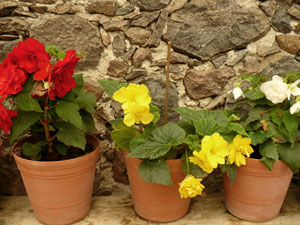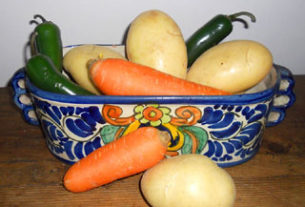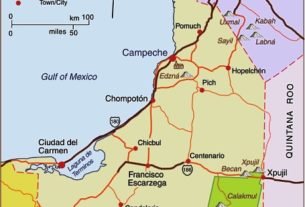
Flowers and flower arranging have played an important role in Mexico from ancient times to the present. The symbolic meaning of flowers is prominent throughout ancient Mesoamerican thought and practice. Flowers could represent anything from beauty and creation to death and destruction.
Tlacaelel, a councilor to Moctezuma I (1440-1469), initiated a mystical warrior vision of the Aztec destiny called the “Flowery Wars” in which prisoners were taken for the purpose of sacrifice. The flower theme runs through the many epithets for war. But in 1490, a group of Aztec wisemen and poets gathered at the home of lord Tecayehuatzin, prince of Huexotzinco to discuss poetry, art and symbolism. For these ancient poets the essence of life was summed up in the phrase, “In Xochitl, In Cuicatl”, meaning “The flower, the song”, a nahuatl metaphor signifying the art of poetry, “The one true thing on earth”. The Aztecs cultivated and used flowers in many forms, including garlands, flower arrangements, paper flowers and flower adornments of all kinds.
Offerings of flowers were placed on the statues of deities. Flowers were an important feature in many ceremonies. During the feast of Tlaxochimoco, (Distribution of flowers,) the people exchanged flowers. Concubines of great nobles, paraded about the streets wearing garlands of flowers. Lords sat surrounded by flowers, which they lovingly picked up one by one and then laid down again. The sixteenth century Dominican Friar, Diego Duran reports such was the Aztec passion for flowers, nothing gave the people more happiness on this day, than simply smelling any type of flower.
Three Aztec deities were especially associated with beauty, pleasure and art, hence with flowers. The feast of the Xochiquetzal, (meaning “Flowery Plumage”) was called “Farewell to the Flowers” because it took place at the end of the main growing season. In this festival persons, temples, houses, streets – all were decorated with flowers. Xochipilli, “Flower Prince”, the god of positive creative energies, was associated with flowers, dancing and feasting. Overlapping this god was Macuilxochitl “5 flower”, named after a specific date in the Mesoamerican calendar.
The ancient Maya too were noted for their love of flowers. The decorative use of flower themes can be clearly seen on ceramics showing the headdresses and thrones of Maya rulers. The artistic representations of flowers and plants depicted on painted vessels, reveal am acute observation of the forms and shades of nature.
Much of the ancient symbolism and some of the actual practices of arranging and using flowers have continued to the present day here in Mexico. It is little wonder then that flower arranging is a natural art to Mexicans today. The abundance and variety of flowers to be found in this vast botanic garden of Mexico has fascinated plant lovers, gardeners and the ordinary traveler to Mexico, since the time of the conquest. Every important plant category is well represented south of the Rio Grande. Mexico has six to eight hundred different species of oaks in comparison with the 84 in the U.S. and 10 in Canada. With six to eight hundred kinds of wild orchids, more than half the worlds cactus species, and more beautiful varieties of native bulbs than the Netherlands. Mexico, with about one-fourth the land area of the US, has an equal number of plant species, estimated at 20,000.
The gladiolus, so essential for line to the flower arranger, especially in church arrangements, is grown profusely in Michoacan. Acres of bulbs are planted every 10 days. They dominate the San Juan market in Mexico City (the largest cut flower market in the world). In the mountains above Mexico City carnations, Calla Lilies, Shasta Daisies, Snap Dragons, Roses, Baby’s Breath (One that is very often used in Rose arrangements to give it extra life,), Blue Lily of the Nile, and other non-Mexican arrangement favorites are grown for the citie’s markets.
However, the flower arranger does not have to travel to Mexico City for the finest flowers. They are imported to various markets in Guadalajara. Close to the city’s famous Parque Azul, you will find flower artisans, young and old, at work. There you may purchase oasis and other flower arranging materials and jot down a few ideas for your next arrangement. But whether or not you are an avid flower arranger, at least be like those ancient flower lovers and take time to “Smell the Flowers”.
This article appears courtesy of the Chapala Review, a monthly Newspaper published in Ajijic, Jalisco, Mexico. The focus is the Lake Chapala area. The goal is to provide quality information about the area, its stories, events, history, culture and people.



